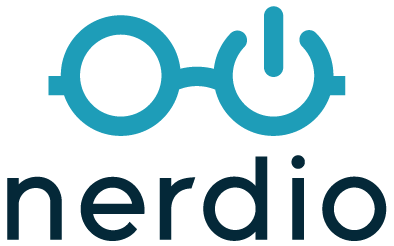The Campus Cloud Revolution
How universities are transforming education through strategic tech partnerships

Not so long ago, Alan Sprague stood in the computer lab at Oregon State University’s College of Business, surrounded by rows of humming machines. For 30 years, students had shuffled in and out of this room, logging into shared computers to complete their coursework.
But as Sprague, the college’s IT manager, surveyed the scene, he knew it was time for a change.
“The hardware churn of running an on-premises environment was just starting to kill us,” Sprague said. “We needed a more flexible and scalable solution.”
Sprague’s dilemma is one faced by colleges and universities across the country. As higher education grapples with declining enrollments, budget constraints, and evolving student expectations, many institutions find themselves at a crossroads: Stick with familiar but outdated on-premises technology, or embrace the cloud revolution.
Nearly two in three university chief technology officers (CTO) said they believe digital transformation at their institution is either essential (23%) or a high priority (39%). Changing student expectations and the drive for their achievement are at the core of the conundrum. More than 80% of surveyed CTOs cite student success as a main force behind the need for the transformation.
For Oregon State University and a growing number of schools, the choice to embrace digital transformation has been obvious. By partnering with vendors to leverage cloud technologies, these institutions are discovering a host of benefits through a powerful combination of flexibility, scalability, and cost-effectiveness.
The six major advantages

Oregon State’s experience is similar to numerous other universities, and it highlights six key advantages driving this shift toward cloud adoption in higher education. These benefits are reshaping how institutions approach their IT infrastructure, educational delivery, and overall operational efficiency.
Right now, nearly 60% of surveyed CTOs said they feel their senior administrators treat their IT team like a utility rather than a strategic partner. If the cloud revolution succeeds, that percentage should drop to next to nothing.
Not surprisingly, the most commonly cited reason to go to the cloud is the bottom line.
1. Controlling costs through automation
Mike Rigo is a Microsoft alliance executive with Nerdio, a software company that helps customers reduce complexity and maximize their ROI in Microsoft Cloud technologies, such as Azure, Azure Virtual Desktop, Windows 365, and Intune. He said one of the most talked-about advantages of cloud adoption he hears from universities is the ability to control costs through automated scaling as needed by their ultra-dynamic workload schedules.
In traditional setups, machines remain on. Organizations own this on-premises equipment, so they’re racking up expenses regardless of usage. “It doesn’t need to be that way,” Rigo said. A cloud-based network can be provisioned to turn on as needed and then immediately shut off if no one is using it, saving money and benefiting the environment at the same time.
“You can even set it and forget it to the point where if you provisioned 20% of your environment on a Monday morning and it turns out that Monday is Labor Day, no worries,” he said. “It turns on at 8:00 am, and at 9:00 am, if no one's logged on, it turns off your pre-provisioned machines.”
This level of automation can lead to massive savings. At Oregon State University, the impact was substantial.
“Leveraging Azure and Nerdio’s automation, we were able to significantly reduce these costs, renting compute power only when needed,” said Noah Estes, OSU College of Business operating system network analyst. “The flexibility and customization we have now weren’t possible with our previous solution.”
Photo by Avi Richards on Unsplash
Photo by Avi Richards on Unsplash
2. Enabling remote learning anytime, anywhere
The COVID-19 pandemic highlighted the critical need for flexible learning environments. Cloud technologies make it possible for students to access educational resources from any location and on any device.
“If we want students to succeed, we’ve got to help them learn in the way that works best for them,” Rigo said. “Some students work really well in a classroom with lots of other people around, and other people work really well sitting in a room alone with a computer in front of them where they are not distracted.”
Penn State University’s experience exemplifies this advantage. With 24 physical campuses and a virtual World Campus, the university leveraged Azure Virtual Desktop (AVD) to provide World Campus students with access to the same resources as those conducting their studies in person.
By September 2023, just two years after a partnership with Nerdio began, Penn State reached more than 1,000 active users leveraging AVD and Nerdio, and it saved more than 71% on its AVD bill.
3. Adapting resources to curriculum needs
Cloud-native approaches allow institutions to rapidly adjust their technology resources based on changing curriculum needs. At Oregon State, this flexibility proved invaluable.
“We only needed (certain curriculum software) for one term a year, and the cost of maintaining Nvidia-powered infrastructure year-round was astronomical,” Estes said. “Being able to spin up services, use them during class, and spin them back down afterward gives us the agility we never had.”
Michael Holmes, assistant director of endpoint management at the University of North Florida, agreed.
“You can size your host pool the way you want, and when you don’t need those resources anymore, you can just get rid of them and no longer incur those costs,” Holmes said. “This functionality has been a real game-changer for us.”
“ We've gained control, flexibility, and scalability, and we did it without sacrificing the autonomy we need to support our students.”
4. Eliminating on-premises hardware and improving job satisfaction
By moving to the cloud, institutions can shed the burden of maintaining and upgrading on-premises hardware. It also enables universities to more accurately forecast their technology spend.
“Instead of requesting $70,000 every five years, we now have a manageable annual line item,” Sprague said, describing OSU’s transition from a capital expenditure model to an operational one.
This shift not only reduces costs but also frees IT staff to focus on more strategic initiatives. As an added bonus, it created a better work environment for the IT team, boosting job satisfaction, retention, and recruiting.
“I don’t have to run to the labs at odd hours or sacrifice weekends,” Estes said. “We’re saving at least 40% of our time, and it’s changed our work-life balance.”
Holmes saw similar satisfaction at the University of North Florida.
“The impact on human capital and quality of life for my lean team has been phenomenal," he said. "The functionality of the platform has been a huge time saver, plus the folks at Nerdio have really become an extension of our department.”
Photo by Christina @ wocintechchat.com on Unsplash
Photo by Christina @ wocintechchat.com on Unsplash
5. Leveraging stable vendors
Partnerships with established vendors, such as Microsoft and Nerdio, provide institutions with reliable, cutting-edge technology solutions. These relationships often come with additional benefits, such as education pricing, specialized support, and informational dashboards, that make it easy to communicate valuable information.
Ian Cohn, systems design specialist at Penn State, attests to this advantage.
“Nerdio Manager layers on top of AVD in a non-disruptive manner to manage the underlying resources without getting in the way of any native Microsoft services, which was a real selling point for our IT team,” he said. “I can quickly and easily provide high-level insights to my superiors and other key decision makers within the organization when it comes to matters that impact costs.”
6. Enhancing cybersecurity
Cloud adoption can also bolster an institution’s cybersecurity posture. By centralizing data and applications in the cloud, schools can reduce the number of potential vulnerability points and leverage the advanced security features offered by major cloud providers.
“Shifting to a private cloud is a vast improvement over physical endpoints because you've moved the responsibility from end users with no IT security training to your admin team. But when you shift to a public cloud, you’re moving a lot of that security to your public cloud of choice,” Rigo said. “If I have to choose between placing my trust in Microsoft or placing my trust in any individual school or organization, obviously I'm going to go with Microsoft and assume that they have got their security on lock.”
The ultimate goal: The student experience

Despite the clear benefits, many institutions hesitate to make the leap to the cloud. Common barriers include concerns about complexity, lack of in-house expertise, and fear of the unknown. But for Holmes and many others, the solution to these fears comes in the form of partnerships with companies, such as Nerdio, that specialize in simplifying cloud adoption and management.
“We are a small team expected to keep up to seven endpoint management platforms in tip-top shape,” Holmes said. “Nerdio filled all the holes we perceived initially with the AVD offering.”
At the heart of this technological transformation is the desire to improve the student experience. By freeing up IT resources and providing more flexible, powerful computing options, institutions can focus on enhancing learning outcomes. Technology and student success should be viewed as inexorably intertwined, university CTOs say.
In fact, in addition to the 81% who linked digital transformation with future student success, 70% said student data is essential or a high priority to promote learning and retention, and 63% said the same about digital transformation’s application to student services.
As more institutions embrace the cloud, the landscape of higher education continues to evolve. For those still on the fence, Rigo offers a simple piece of advice: “Don't be afraid to evolve. Ask for resources. There's no reason to be sleeping on these technologies.”
In the end, the cloud revolution in higher education isn’t just about cutting costs or streamlining IT operations. It’s about creating a more responsive, accessible, and effective learning environment for students.
“We've gained control, flexibility, and scalability,” Sprague said. “And we did it without sacrificing the autonomy we need to support our students.”
This custom content is sponsored by Nerdio and developed by Inside Higher Ed's sponsored content team. The editorial staff of Inside Higher Ed had no role in its creation.




